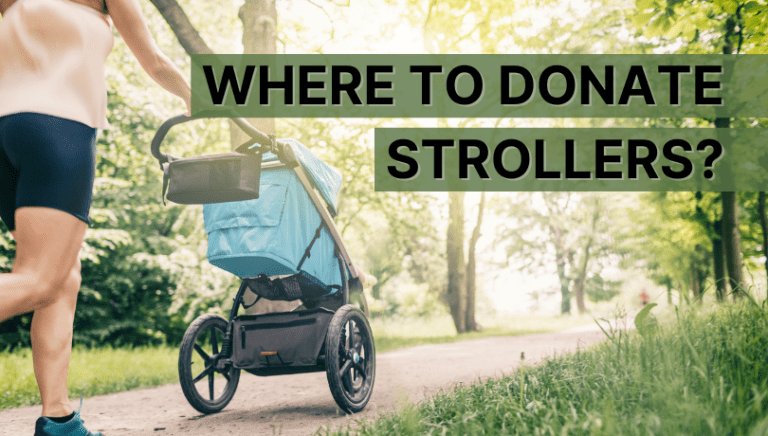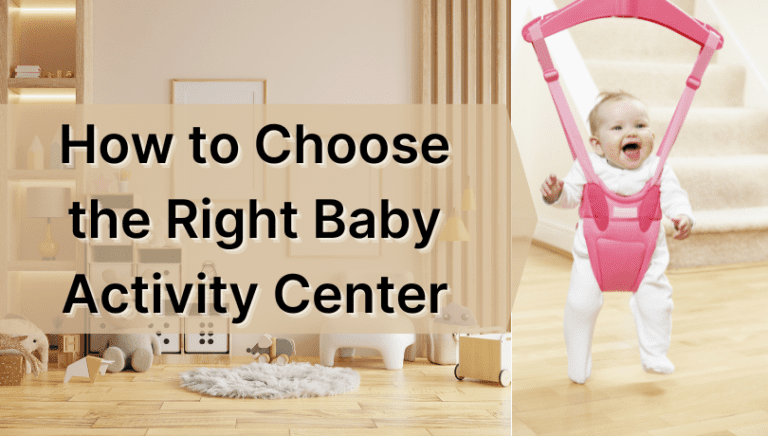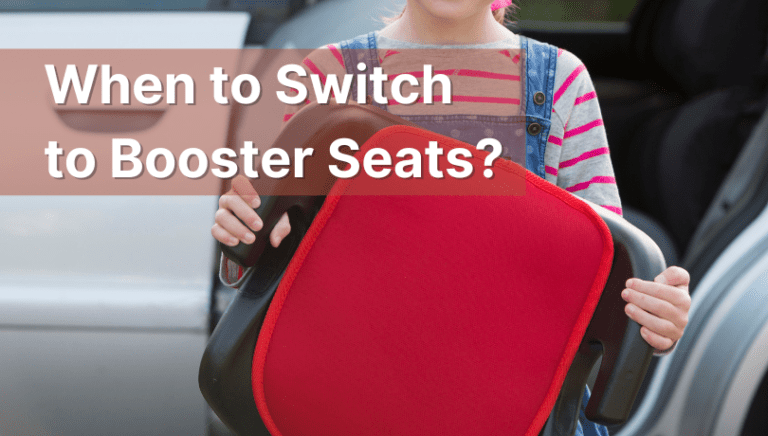From Baby Bassinet to Crib – 8 Helpful Transition Tips
When you’re caring for a newborn, you’ll have to prepare yourself for exciting and important developmental milestones every few months! From smiling, looking up, cute babbling, and more, we have so much to look forward to as parents.
Another crucial milestone is when they try to roll over and move their bodies to explore their surroundings. This is one sign that your baby is ready to transition from bassinet to crib.
So, let’s take a more detailed look at why the transition is necessary and how you can ease the switch from bassinet to crib, both for your baby and for yourself.
Table of Contents

When to Transition from Bassinet to Crib
Before we go ahead, this is your gentle reminder that all babies are adorably, uniquely different. You don’t have fixed rules or deadlines for when babies need to reach milestones.
So, while these signs below help you understand when your baby is ready for the crib, I’d still recommend that you combine the knowledge with what your instinct tells you and go from there.
Here are 3 signs to look at when you’re deciding to make the switch.
- Weight Limits – If your baby is nearing the weight cutoff (usually at 15–20 pounds, but please verify it all the same), take it as a hard sign to switch them to a crib. A bassinet can wobble or topple if you place a weight beyond its limits.
- Age Limits – Bassinet age limits are usually at 4–6 months. So, if your baby is at that point, please check if your baby is at the upper weight limit too, and then switch them to cribs.
- More Mobility – This one’s super important. If your baby is attempting to sit up, touching their hands and feet, or rolling over (or trying to), it’s time to switch them to cribs as soon as you can.

Bassinets are not as sturdy as cribs and can’t handle movement too well. So, it’s best to prevent accidents like toppling and switch them after they get more mobile. It also helps to understand how to keep your bassinet safe. Here are my five safety tips for bassinets to help you maintain it better.
When I was mulling over the decision to transition Fiona from bassinet to crib, I gave first preference to cognitive and mobility cues. Around the same time, I simply kept in mind the bassinet’s age and weight limits to track when Fiona reached the threshold.
If you’re looking for more details on signs to stop using the bassinet, check out How Long Can a Baby Sleep in a Bassinet?
Baby’s New Home – Getting the Crib Ready
Dear parents, it helps to get the crib ready at least a few weeks before you decide on the switch. Why?
- You’ll need time and patience to set up the crib in the nursery and assemble it without rushing it. So, make sure it gets delivered well in advance and follow the instructions carefully.
- By setting it up earlier, you’ll also have the time to slowly and gently introduce your baby to the crib during playtime or naps during the day.
Here are a few things to keep in mind when you’re getting your crib and crib mattress ready (and keep the safety standards in mind):

- Understand how to lower and raise crib mattresses, and know why it helps to lower the crib height when your baby moves around in earnest.
- Choose an easy-to-assemble crib and once you’re done assembling, inspect for sharp objects or splinters before you place your mattress in.
- Make sure the mattress fits snugly in the crib. Go through crib mattress sizes and choose one that fits in leaving no gaps in-between.
- Test the mattress’ firmness to ensure that it does not sag. This will help prevent suffocation risks!
- Always place your baby on their back with their feet closer to the bottom of the crib. This will help protect your baby from hitting their head on the crib.
Bassinet to Crib: Making the Transition Smooth
Have you been in situations where the crib is all cozy and ready, but your baby refuses to sleep in it?
I know the feeling… Even getting them to try it is a bit of a task. But you shouldn’t give up!
If you’ve taken a peek at my previous blog – Why Your Baby Sleeps Better in Your Bed, you’ll know that babies love your warmth and smell, and they thrive when you give them a solid bedtime routine.
Recommended Reading: How to Choose a Perfect Crib

So, let’s take a look at how you can make this transition smoother:
- Get the Room Ready – Whether the crib is in the nursery or a smaller bedroom, make sure you dim the lights, move your baby away from all noise, and keep the room well-ventilated for good sleep.
- Make the Crib Comfy – The crib mattress decides how well your baby sleeps at night. So, get them a firm and comfortable mattress that they can get used to sleeping in!
- Start With Short Naps – Your baby needs time to accept the crib as their new sleeping space. Let them play in the crib with their favorite toys during the day, and take short naps in it to get them used to it.
- Stay With Them During Naps – At first, your baby will want to feel your presence nearby while they sleep. Sit close to them so they can understand they’re not alone. If you’re looking for a way to keep them close while offering comfort during daytime naps, a baby wrap or carrier can be a perfect solution.
- Soothe Them From The Crib – There will always come a time when your baby will cry and fuss. Just ensure that you soothe them without picking them up from the crib! This will help them get more familiar with the crib, and you’ll find that it’s easier to calm them over time.
- Solid Bedtime Routines – The routine before sleep helps you sleep better. I sincerely believe that. So, at night, bathe your baby, change them into fresh clothes, and breastfeed them before sleep. All these routines help your baby wind down and relax just in time for bed.
For More Info: How to Get Your Baby to Sleep In the Crib?
Bonus Tips – Kelleigh Tested!
Here are my 2 extra tips to get your baby to sleep comfortably in their crib:
- Familiar Smells – Babies tend to find comfort in a mother or father’s familiar scent and sleep better when they can sense that. To transfer that familiarity to the crib, dress them in clothes that carry your scent (I usually keep my baby’s clothes with mine).
- Sufficient Warmth – Another point of comfort for babies is cozy warmth. My baby has always found it soothing to sleep in my arms, finding comfort in the heat of my skin. So, you can replicate that by using a heating bag to warm up the crib mattress just enough before you put them to sleep.
P.S. If you plan to have more children, it helps to maintain the bassinet well and keep it in top-notch condition for your next child. So, clean the bassinet and mattress, and store them safely until you are ready to use them again.
Concluding Thoughts – Bassinet to Crib
The more you can prepare for the switch, the easier it will be. Get your crib ready well in advance and help your baby get used to the crib environment before making the transition to cribs.
Please ensure that the switch is gradual! Do not rush the process. In fact, there’s a lot of joy in the journey of it. Let them play with you in the crib, stay with them for short naps, and slowly, your baby will start to feel that the crib is a comfortable, safe place.
Also, cherish these moments, dear parents. Because time will fly by so quickly!
Did these tips help you? Please let me know your thoughts and if you’ve got more tips that worked for you!






